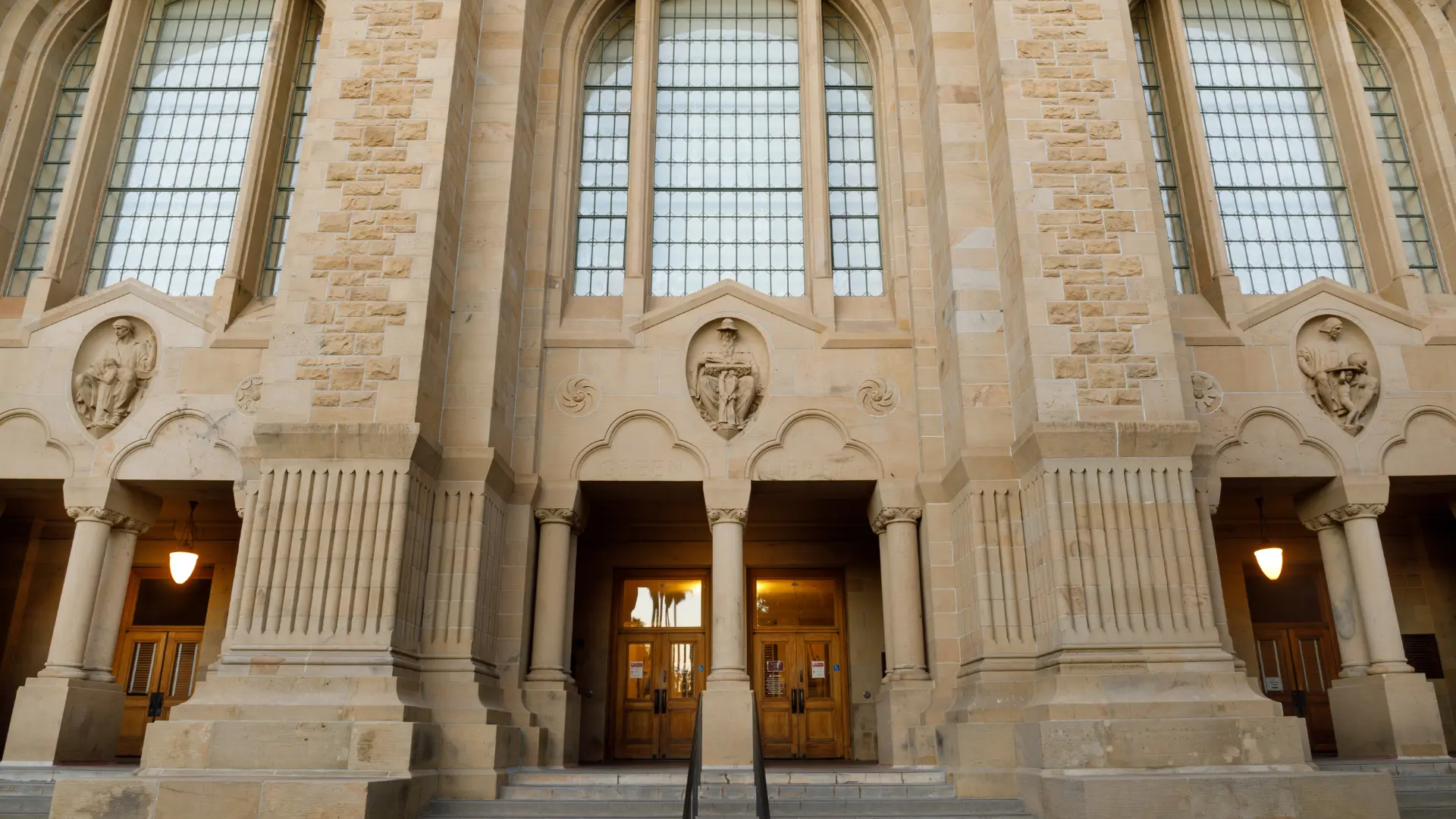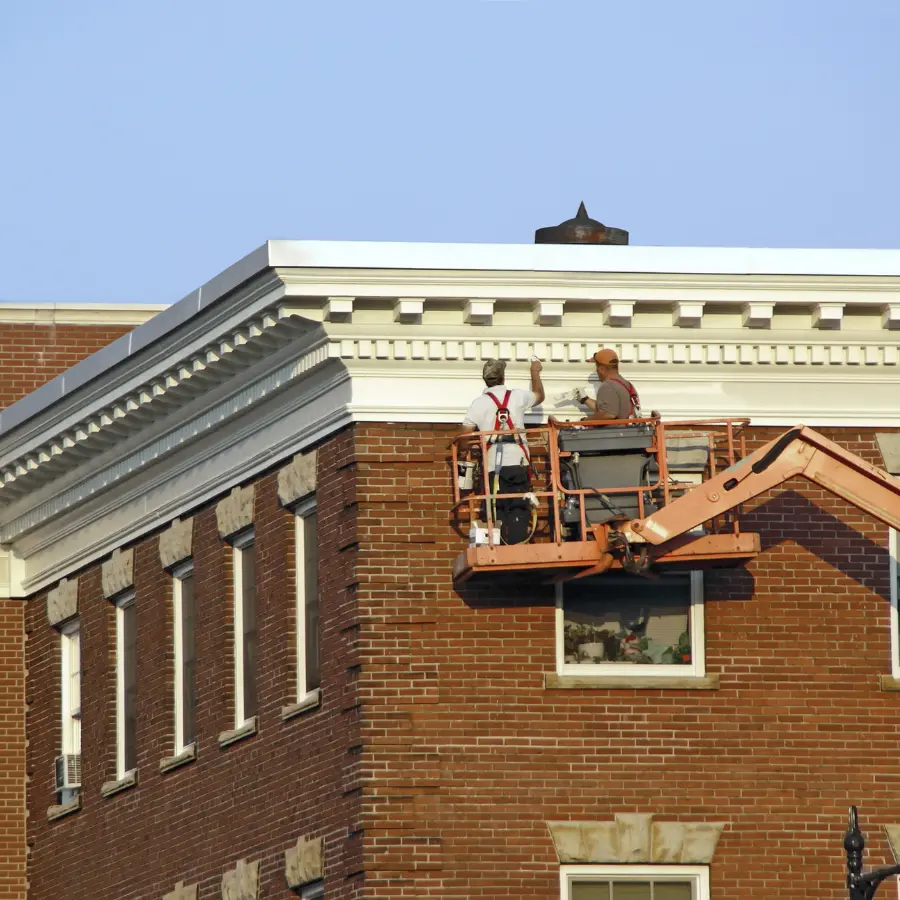What is Façade Restoration?
Written by Masie Pitchard

Have you ever glanced at a rundown, weather-worn building as you passed by, thinking that it must have once possessed a magnificent allure? The good news is that every structure and house, regardless of its current state, has the potential to be revived to its former glory through the remarkable process of facade restoration. It is this very process that allows us to revel in the splendor of centuries-old homes, castles, and forts, transporting us back in time.
Facade restoration encompasses a comprehensive set of actions aimed at preserving the exterior of a building's facade. It goes beyond mere repairs and renovations, it involves remarkable observation, diligent study, and thorough research to revive the original aesthetics of a structure's frontage.
From creating cohesion and harmony in the façade’s style to gripping the true essence of a structure’s epoch, there’s a lot that goes into façade restorations. Let’s learn what it truly means to restore a façade.
What is Façade Restoration?
Façade restoration is a process aimed at preserving and reviving the charm and visual allure of a building's frontage. It involves a comprehensive process wherein professionals examine the exterior of the structure, undertaking repairs and renovations not only for aesthetic enhancement but also to restore its functional integrity.
The Economic and Structural Advantages of Façade Restoration
While the primary objective of façade restoration is to restore the building's visual appeal, it also holds economic and sustainability advantages. Firstly, a meticulously restored façade can significantly increase the property's value and desirability, making it an attractive investment. Buildings with well-maintained frontages are riveting, making them more appealing to potential buyers or tenants.
Let’s take a thorough look at some of the many advantages of façade restoration and maintenance:
| Economic Advantages | Sustainability Advantages |
|---|---|
| Increases property’s resale value | Reduces the need for new construction materials |
| Increases the value of surrounding properties | Eliminates the need for demolition and reduces hazards created by debris |
| Enhances desirability for buyers/tenants | Decreases energy consumption associated with manufacturing new materials |
| Costs less than reconstruction | Preserves cultural heritage and architectural history |
| Costs less than reconstruction | Preserves cultural heritage and architectural history |
| Boosts tourism and local economy | Minimizes environmental impact of construction |
| Generates job opportunities | Improves building's energy efficiency |
| Supports local businesses | Reduces long-term energy costs |
| Attracts potential investors | When sustainable materials are used in façade restoration, it conserves energy |
| High chances of occupancy because restoration is done in an already-established neighborhood | Façade restoration reduces waste generation by preventing the complete replacement of materials. |
According to a study conducted in Britain titled "New Tricks with Old Bricks," new construction and replacement projects can generate approximately 50 tons of CO2 in the air. In contrast, restoration only emits around 15 tons of CO2. Although these figures may vary in different contexts, this study is proof enough that restoration should always be prioritized over replacement to save our environment.
Why is Façade Restoration and Inspection Necessary?
It’s true that façade restoration increases the property’s value and is satisfactory for the inhabitants. However, in certain situations, façade restoration becomes necessary, and neglect can lead to injuries, massive financial losses, and even loss of life.
When a façade is left alone for too long, the pollutant on the surface can eventually find their way in and become a safety hazard. These contaminants can turn the air foul.
Another safety hazard posed by neglect in façade restoration is damage to the structural integrity of the building due to fractures, deterioration, and corrosion. This can lead to the collapse of the building at any time and pose danger to the inhabitants as well as neighbors and passersby.

Façade Restoration Inspection
Façade restoration isn’t always so black and white. Some structures and buildings and homes appear just fine at first glance, but their residents would be adamant that it needs restoration.
That is why experts would conduct a thorough examination before deciding whether a structure needs façade restoration or not. For property owners, façade inspection shouldn’t be a one-off thing only. Regular inspections save you from significant financial losses in the future, ensure that the front of your property always looks pristine and beautiful, and tells you what to prioritize.
Here are some of the common inspection areas of façade restoration:
Surface Damage
When assessing the condition of a building's façade, it is crucial to be vigilant for signs of surface damage that may indicate underlying issues. These include warping, cracking concrete and masonry, loose screws, building settlement or shifting, and water leaks. Promptly addressing these issues is essential to prevent further deterioration and extensive harm to the structure.
These minor deteriorations can lead to more severe damage if left unattended.
Building Openings
A thorough inspection of building openings, including doors, windows, and vents is conducted by experts. These openings can potentially serve as entry points for water leakage. Identifying and addressing any vulnerabilities in these areas is crucial to prevent water infiltration and subsequent damage to the building's interior.
If there are broken doors and cracked glass on windows, their restoration is prioritized to prevent more serious damage.
Structural Damages
Regularly conducting thorough checks and inspections on the building's structure and appearance is vital for maintaining a safe and secure work environment and living conditions. By being proactive and vigilant in these inspections, potential issues can be detected early on, preventing them from escalating into more significant problems.
During these inspections, it is crucial to identify any structural damage that could potentially lead to leaks or moisture build-up. This includes carefully examining the presence of cracks, deteriorating sealants at expansion joints, and pollutants that could compromise the integrity of the building envelope. Promptly addressing these issues through appropriate repairs and maintenance is essential to prevent further damage and ensure the long-term durability of the exterior structure.
Roof Elements
It is crucial to examine the condition of roof elements, especially those that are more susceptible to deterioration from prolonged exposure to heat and moisture, such as gutters, downspouts, and drains, as well as copings and flashings.
The purpose of the inspection is also to identify any debris accumulation that may obstruct the proper functioning of roof elements.
Top Reasons Why We Shouldn’t Neglect Facade Restoration & Maintenance
When we think of façade restoration, we think of reparation at a large scale, when the smartest thing a property owner can do is address damage when it’s at its initial stage.
Here are some of the top reasons why façade restoration should be given priority when the damage is at its beginning stages:
Façade Damage is Prone to Building up Overtime
Most people are blindsided by their façade deterioration because it rarely ever happens all at once or on a great level. Deterioration builds up over time. It starts with a chip which turns into a crack which turns into a fissure and corrosion. The key to preventing complete façade damage is keeping an eye out for even the slightest of deteriorations and addressing them immediately.
Neglect Can Lead to Costly Expenses
Damage to the façade happens slowly because it accumulates over time. This makes it easier to neglect and overlook small repairs. It only becomes obvious when the damage has accumulated for years and has reached a point where it can no longer be ignored.
However, if damages are not addressed at the exact moment, they can lead to costly repairs. A small crack that could’ve been fixed for a small amount can accumulate over time and can destroy a whole wall and fixing that may leave a dent on your bank account. Small leaks can also lead to massive damage when they are neglected for too long.
Neglect Can be Hazardous
A single loose screw on a heavy object can have severe consequences, including the potential for serious injuries or even fatalities. Neglecting the maintenance of a building's façade poses significant safety hazards and jeopardizes the well-being of all occupants within the premises. Therefore, it is imperative to never overlook façade damage and to promptly engage the expertise of professionals for repair.
It is essential to recognize that seemingly small damages to the façade can quickly escalate into hazardous situations. For instance, these damages can allow contaminants to infiltrate the interior of the building, compromising its overall structural integrity. Additionally, the presence of pollutants and other harmful substances can deteriorate the air quality within the premises, posing health risks to the occupants.
Factors That Contribute to Façade Deterioration
Facade restoration often falls victim to neglect due to the gradual accumulation of damage over extended periods rather than happening all at once.
However, it is crucial to be aware of the various factors that contribute to the deterioration of your façade, so you can take timely measures to minimize their impact.
Some of these factors include:
- Exposure to harsh weather conditions, such as rain, wind, sunlight, and temperature fluctuations, can gradually erode the facade materials and compromise their integrity.
- Vibrations, movements, and structural settling can contribute to the gradual wear and tear of the facade, leading to cracks, gaps, and shifts in the building envelope.
- Air pollution, including pollutants, dust, and chemicals, can gradually deposit onto the facade, leading to staining, discoloration, and deterioration of the surface materials.
- Facades are susceptible to the growth of moss, algae, fungi, and other biological organisms, particularly in areas with high humidity or insufficient sunlight. These growths can degrade the facade's aesthetics and cause material degradation.
- Over time, water can infiltrate the facade, either due to poor drainage systems, leaks, or moisture condensation, resulting in the decay of building materials, mold growth, and structural damage.
Façade Cleaning
We’ve talked a lot about façade inspections and repairs. However, cleaning the façade is an equally important part of façade restoration. Façade restoration is a combination of repairs, painting, and cleaning.
Like repairs, the façade of a structure must be cleaned at regular intervals. Many times, it is years of buildup of dirt, grime, pollution stains, mold, mildew, and dust that causes a façade to lose its allure and fall into shambles.
Admittedly, cleaning the façade of an intricately designed building can be a bit of a challenge. Cleaning permanent stains is also not something we can do DIY. Most times, it requires the help of a professional to clean the façade while taking care of nuances. Armed with expertise and modern machinery, experts perfectly clean the façade.
Professional cleaning is done using multiple methods, such as high-pressure water, low-pressure steam, poultice cleaning, and a combination of specialist cleaning methods.
Frequently Asked Questions
How is a façade different from cladding?
Façade refers to the outward appearance of a structure. It includes the design, the color, the theme, and the style of a building’s front, including all the sides of the roof, windows, doors, columns, and other elements of décor. On the contrary, cladding is the layer on the outer wall that protects a structure from natural elements. Cladding is part of the façade.
What are the most common façade repairs?
Over the years, some parts of the façade are more in need of repair and restoration than others. Common façade repairs include replacing window frames, rebuilding sections of walls, repainting the exterior, glass restoration, fixing water leakage, fixing molding and panels, sealing, repairing cracks, repointing mortar joints, and cleaning and washing off debris, grime, and growth.
Are balconies considered parts of a façade?
Façade is the part of the structure that faces the main street. Anything and everything that makes that part of the wall is included in the façade. That means the balconies at the front of the house are part of the façade.
Final Thoughts
Facade restoration is a specialized process that requires expertise in architectural conservation, material selection, and historical research. By undertaking facade restoration projects, we can breathe new life into aging structures, boost our property’s value, preserve our architectural heritage, and create a lasting impact on the built environment. Not to mention, end up with a property with a lot of character. We can do all that while keeping the environment clean and keeping a lid on our expenses.
